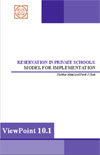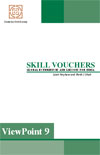| Research |
Non-State Providers and Public-Private Partnerships in Education For The Poor
Authors: Norman LaRocque, senior education specialist, Southeast Asia Regional Department, Asian Development Bank (ADB), and Sena Lee, consultant, East Asia and Pacific Regional Office, United Nations Children’s Fund (UNICEF)
UNICEF, 2011
Abstract: Although states are committed to fulfilling the rights of children to access basic services, many developing countries in East Asia and the Pacific face daunting challenges in service delivery. Public spending on services too often does not reach poor and marginalized children, who suffer from high rates of child mortality and low rates of school attendance. When services do reach those in poverty, facilities and resources are often substandard and per-unit consumption costs higher.
As this paper shows, non-state providers (NSPs) play an important role in the delivery of education services, both generally and to the poor. Indeed, at times, private and non-state schools are the only educational option for disadvantaged and marginalized households and communities. Even where there is public provision of education, NSPs offer a useful complement to their public counterparts as a means of improving the overall quality of education delivered and catering to groups with specific educational or other needs. There is considerable scope for increasing non-state participation in the education sector through a variety of innovative mechanisms, including the many forms of public-private partnership (PPP) highlighted in this paper.
... read more |
| Education News |
| |
States not following Central RTE Act provisions: NCPCR report
- The Hindu, 15 Jan 2014
State governments are going “against the letter and spirit” of the Right of Children to Free and Compulsory Education Act, 2009 (RTE Act) on several issues in the State rules they have formulated, reveals a recent review report of the National Commission for Protection of Child Rights (NCPCR). |
A renewed model of education
- Live Mint, 21 Jan 2014
The recently released Annual Status of Education Report (ASER) on rural education in India contains two main findings. First, learning levels among primary school age children in rural India continue to be shockingly low despite a steady increase in education spending under the Sarva Shiksha Abhiyan (SSA) and the Right to Education (RTE). Second, there has been a steady increase in the fraction of parents abandoning free government schools in favour of fee-charging private schools, with the share of private school enrolment in rural India increasing from 19% in 2006 to 29% in 2013. Policymakers should try the ‘public funding-private provision’ model of education. |
A private or public education: that's the $430,000 question
- The Age, 21 Jan 2014
A survey by the Australian Scholarships Group showed parents of a child born this year who choose private education could expect to spend $504,742 in metropolitan Melbourne from preschool to year 12. That cost is $45,747 more than the national metropolitan average. The group said parents could factor in education costs of $68,343 from pre-school to year 12 in the state system for a child born this year.
|
Fill up 14844 vacant posts of teachers by April 2015: HC to Maharashtra
- Economic Times, 23 Jan 2014
The Bombay High Court today asked the Maharashtra government to fill up 14844 vacant posts of teachers in secondary and higher secondary aided schools by April 2015. The state government had banned recruitment of teachers in primary, secondary and higher secondary schools in 2012 after it came to light during an official survey that there were excess teachers in many educational institutions.
|
Delhi government asked to make schools refund excess fees
- Deccan Herald, 24 Jan 2014
The Delhi High Court Friday directed the city government to implement recommendations of a panel on the unaided private schools' fee structure which has asked nearly 250 institutions to return the "excess amount" to parents with nine percent interest.
|
|
|
|
Poll
ASER 2013: 1. Quality of education in India is abysmal. 2. Indians are losing faith in government schools. Do you agree?
To vote click here.
|
|
|
Video
 SCNC 2013: Keynote Speaker - Ashish Dhawan, Central Square Foundation SCNC 2013: Keynote Speaker - Ashish Dhawan, Central Square Foundation
The speaker discusses his vision for education in 2025. He stresses that while making learning the prime focus of the system, there is a need to have a vision of assessment in our country – of students, schools and systems. Also he elaborates on the teacher training institutes, school leadership, early childhood education, PPP’s and Technology in Education. Watch this video here.
|
|
Publications
 
|
| |
|
|



